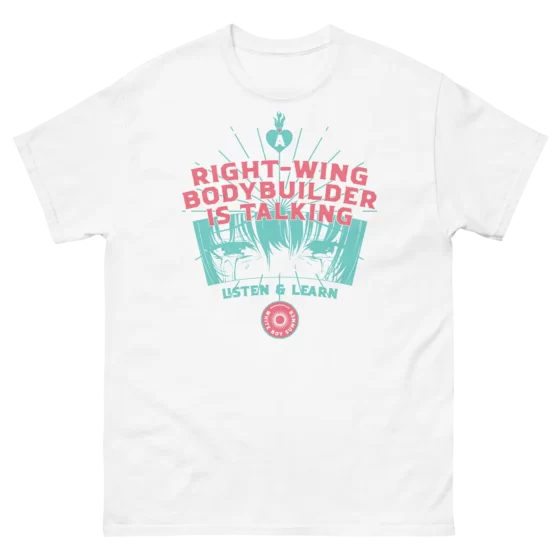Walking Austin, pt.4
Old Austin was built by people. New Austin is built by firms. Firms have the same problem that bureau’s do. Who will be held responsible for all this ugliness? Those who create these new buildings will never inhabit them. That much is apparent in their carelessness. Am I wrong? Am I historically inaccurate? Does the data not show that man was once closer to his creations? Did he once have to bear the responsibility for structures he wrought? Is this not the misplaced key of justice?
Once upon a time man would build the building himself, or commission it to be built, or be the one commissioned—either way, a name would design, a name would oversee, a name would execute. And now, who constructed The Ashton, or The Four Seasons, or The Bowie—these 50 story monuments to artlessness? Names are getting weird; HKS, 3XN. Not people—firms. Nameless, faceless, no one to blame, no one to praise, no one. Do they even live in Austin? Do they even live in America? Will they ever make the pilgrimage to see their “design” in the flesh. Are they even people?
The fundamental tie between creator and creator has been severed. We have undergone a massive diffusion of responsibility and the loss of his brother: glory, and his dark cousin—pride. Pride can save us in ways we do not understand. I heard of one of these condominium towers collapsing in Miami last year. Can you believe it? Here in America! Why did it collapse? The media will talk of faulty design, or lacking inspection schedules, but that is merely the surface. Those people died from our growing pridelessness and shamelessness. A sense of pride could have changed the design. A sense of shame could have changed the inspection schedule.
I would suppose this lesson could’ve been learned in grade school, or however young they force children to start doing group projects these days. The people who call themselves “educators” say that these projects serve to teach children cooperation. But I think their true educational value is as an early display of a leaderless humanity. I learned from just such exercises, that without a head, there is no victory, and multiple visions cannot coexist in creative space. In a creative space, a project with multiple visions does not live to be a healthy project. Thus, this world is split between the beautiful and the ugly—projects created by individual vision, and those created by procedural committee.
What is sacrificed upon the alter of committee is inspiration itself. I have a sneaking suspicion that most people fear the inspiration of others. They view another’s inspiration like a dragon—a powerful beast which is not under their control. The normie’ and uninspired fear that if they are not careful, they could be consumed by the domineering beast of another’s inspiration, and so they attempt to shackle these things with committee and process. A part of the mental sickness of our age is the obsession with collaboration. This value is a not-so-slight indoctrination into the ethics of bureaucracy. Distributed responsibility, distributed pride, distributed shame. A hangman’s noose.
Artistic creation, more than any other type, demands hierarchy. The hall of forgotten movies is littered with dual role direction. The graveyard of ugly structures which could stretch from horizon to horizon was constructed by firms that designed by committee and process. Am I just too American for my own good? Too American to live in this America? I miss the America which did not fear the dragon—which unleashed human creativity upon the world.
Artistic creation can only be collaborative in the sense that all those throughout the hierarchy use their individual skill, honed and selected for its discipline, to serve the higher vision which drips inspiration down the pyramid from its peak. And at that peak, organizing direction must be a single mind riding upon the fire breathing dragon of inspiration, speaking in tongs, speaking to the muse and translating her breath to the organs below. There is no other way to make beautiful things. To insist that two equals can come together, with two visions swirled together like a chocovanilla cone is a total absurdity. It will create something, but it won’t create art.
I have a distinctly different experience standing before a building that is a manifest vision vs a building which is a manifest compromise. The new Google residence at block 185 is a vision. It’s swooping sail shape, articulated terraces and white steel, breath a vision of an eco-modernist utopia. This building is a 50 story vision. Just two blocks north is 6th street Guadalupe residence, and there is nothing sadder than when you can see what something (or someone) was supposed to be. Austin’s new tallest building is a 60 story compromise. What could have been a pure, sun shimmering, unbroken form of aqua glass, anchoring the city with light and beauty, was marred with rows of beige balconies that no one will ever even use. Modernism promises unique shapes, but what it delivers is function over form. To translate it into layman’s terms: the absence of a soul.
…
I am reminded by the space barns in East Austin that there are two philosophies which can be taken when addressing environmental degradation. One, is to consume less, build less, love less, be less, in order to conserve energy. The other: to create more. These two attitudes are truly the attitudes of life and of death. To diminish in order to conserve is deathward and in opposition to the philosophy of creating to conserve, or, the philosophy of life—that of abundance, as opposed to scarcity. Thus, we part from the environmentalist movement of our age, not because their concerns are corrupt, but because their method is corrupt, and one of death.
The conservationist idea of energy reduction is akin to a plan of bodily injury prevention by means of reduced activity. This is in opposition to a plan of musculoskeletal strength. If this perverted form of new age environmental conservatism is adopted, we will find the same result as the person who reduced activity in order to prevent injury. We will find that all systems of the body will break down, and entropy will begin. The only way to preserve is to create a situation whereby destruction is an absurdity, which is only created in a world of energy and resource abundance.
So why are the vast majority of Austin’s new homes being built in this space barn style? Why do they seem to never incorporate any material other than plastic, sheet alloy, and youngly grown wood? That is because stone, old growth wood, brick and iron are heavy, and their production is energy intensive. The deathward Bugman view of energy efficiency results in ugliness. These buildings are places not to live, but to die. They look like housings for robots, not homes for humans. The philosophy of the constructor is written in the construction—the reservation, the fear, the timidity is written plainly in the architecture. There is no flamboyance, no desire, no striving, no joyousness, or articulation of connection to the larger, no sense of beauty. Purely utilitarian.
In space barns of east Austin is imbued the philosophy that man is a burden upon the earth. It articulates man’s secret modern desire to destroy himself. This is the worst of all attitudes—this is half life. I say it’s better to live or to die than to snidely go on living while renouncing ones existence. I say blossom! Or return your waisted energy to the soil. Of course, these people will not actually commit suicide. Their ego will not allow for that. They will live. But theirs will be a cursed life.
The modern progressive sees their entire existence emanating from the original sin of consumption. This philosophy finds its expression in the sentiment that he who is most moral impacts the world least, and he who is most evil impacts the world most. This Giaism is unnatural. What animal softens the step of its foot? The bear puts its foot down strongly and leaves a great print. Indeed, man’s foot is now too large to go carelessly stomping about the Earth. But shrinking our foot has the consequence of decaying our body and souls. Best instead to use one’s powers to increase the earth. Modern man sees this ability within his grasp. With the unlimited energy that is promised in the technology of nuclear, solar, and wind energy, man could once again build temples instead of warehouses for his living. With unlimited energy man could plant two trees for every one he cuts. He could desalinate the oceans and revive endangered species and long dormant ecosystems. But instead, in boomer land, he shrinks himself and he builds space barns. East Austin is not home to the dynamic man of our age. East Austin is home of the technoman—transhumanist, the dying man, conservaman, the last man. A shrinking, diminishing, far smaller than his father man. The backwards trajectory of man.
These buildings, in contrast to the old homes of Austin, say nothing of who built them. Only that those who built them were trying to be ghostlike. These buildings could only be built far from the hurricane coast, for they would be blown away by the slightest of meteorological disturbances. If people adopted this fearful conservative attitude to their physical health, they would wither and die. Such is the reality of the modern conservationist movement. Instead of focusing on creating new energy, it focuses on reducing consumption of fossil fuels. This reductionist philosophy will destroy the hope and souls of the youth. Its implication is that their very existence is problematic. Not to mention, the economic destruction it will bring will destabilize the political system, thus hindering future advancement.
Space Barn is the logical conclusion of secularism. It is the desire for cold logic made manifest in physical structure. In secularism, there is no reason for ornateness, no uniqueness, no desire for permanence, no desire for land or life, no cultural significance, nothing. It is a cold interchangeable structure. Easily built, easily modified, easily destroyed. This is the preferred domicile of locusts. The ideal building style of globalism.
I’m on 17th St. and Singleton. I pass a new build with Corinthian columns. An aberration in this land. It’s in the process of construction but no one is working on the lot today except a man who’s sweeping the unfinished wrap around a farm style porch. I call out to him with the hopes of getting the name of the builder. Sadly, no hablo ingles. We cannot communicate. I move on.
There’s another observation which leads me to believe that these new homes are imbued with this inter-soullessness, which is that they come in a small variety of sterile colors—white, black and grey. You’ll scarcely see those gay colors of old Austin. The east is sort of the New Austin—what they call the gentrified area. It was once the impoverished area of the city, and when the boom began and in came the flood of the professional managerial class, they bought up relatively cheap real estate within biking distance of downtown and they sought to demolish the dank wooden structures to put up their cultureless, resalable modernism.
Why space barn? What the builders will tell you is the honest truth—it’s cost effective. But what’s left out of that answer and what I alluded to earlier, is that one of the major incentives for these boxy and plastic structures, are standards of energy efficiency which are written into the building codes. What’s sad is that this boom time and cultural energy will not strike again. These little plots of land will not be developed again. This opportunity does not strike twice for a city like Austin, and it has used this time of development and cashflow to create ugly structures that have no cultural significance. Contrast that with the 20th century booms of San Francisco, Chicago, and New York, which resulted in some of the greatest waves of architecture the world has ever seen—beautiful brownstones, ornate Victorians, even Southern California has its unique bungalows and Art Deco offshoots. And Austin used its capital to build space barns and apartment megaplex asylums. There will never be a chance to undo this because the majority of this city is being developed in a time of spiritual decay and disillusionment. As opposed to if it had been developed in the 19th or early 20th century—a time of spiritual exuberance and abundance, where the variant materials and styles they had to build with were numerous, thus supporting the observation that the majority of Americas most beautiful creations were created in the time before my era. I suppose timing is something you rarely get to choose.
When a city is developed almost begrudgingly, in a time of cultural and spiritual insecurity, you see these types of very conservative structures such as the space barn, or the brutalist, and modern. You see a reservation and a shame of existence—a people who are ashamed of the joy and exuberance of solid and ornate physical structure. They have a desire to be like poltergeists, on the verge of disappearance, ephemeral, unsolid, inhuman—steering into the transient view of themselves.
The East was once the low income area of the city which can be noted by the smaller lots. Of course, there is no low income homes in Austin now, all who own property here are Brahmins and the poor live in the container ship apartment complexes. In the East there are the occasional small apartment buildings, similar those of west and central, but most renters have been pushed south towards Riverside and south of Barton towards the mega complexes between the highway and Slaughter.
…
Perhaps nowhere in Austin is that sense of small business dynamism more prevalent than in the districts east of 35 between 1st and 17th. Here you find that ancient weirdness. Here exists coffee shops with odd names that started the trend of coffee shops with odd names. Names like Tryhards Coffee and The Speckled Dog. You can get weird herbs from a little store, truck foods of every kind, skate shops, bike shops, fricken rollerblade shops. Fifty different bars with dive aesthetic and midtown quality cocktails, all competing to be the most edgy and punk appearing.
Tolstoy said that all happy families are the same and all unhappy families are unhappy in their own way. But we all know he was really talking about people. But I think he could have been talking about cities. The forces that set the stage for east Austin to be possible were laid down a generation ago, but I fear they are not well understood by the cities current inhabitants. There’s a saying in sports that goes “Do what got you here.” Which means “In your time of greatest challenge, change not your course. Do not abandon the principles which led to your success.”
But I very much wonder if we should hold our breath when anticipating Austin’s future. Austin could succumb to either of two leftist forces. One: the hyperregulation of centralized government which will neuter entrepreneurial enterprise. And the second: total lawlessness, leading to chaotic criminality which over-runs the area, leading people to leave for safer pastures. Or as in the case of California: both.
The question for Austin is whether it can maintain its unique mixture of cowboy libertarianism with leftist creativity. Again, I wonder, are all great cities birthed from the wedding of these forces? Perhaps these forces are only allowed to roam freely in a low-stakes environment. Now with the rise of Texas leading to Austin becoming a more prominent seat of power, and the influx of external investment. Perhaps one can only slow the corrosive forces of wealth and power. But it is one’s duty to do so. Unfortunately this unguarded libness that is the ideology of the blue-city elite, cannot protect anything, not even their own children. They are incapable of saying no to any degradation. Their ideology makes them powerless against criminality and state bureaucracy. I see no attitude of defense in these tattooed blue haired people. As much as they might look like their Germanic ancestors, they truly are their antithesis. Perhaps only the paternal hand of the conservative Texas State legislature can save these people from themselves and save this city from its own self destruction.
































